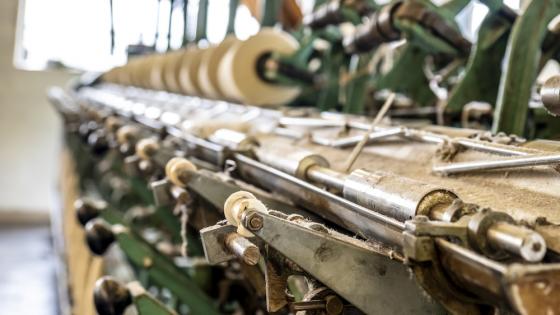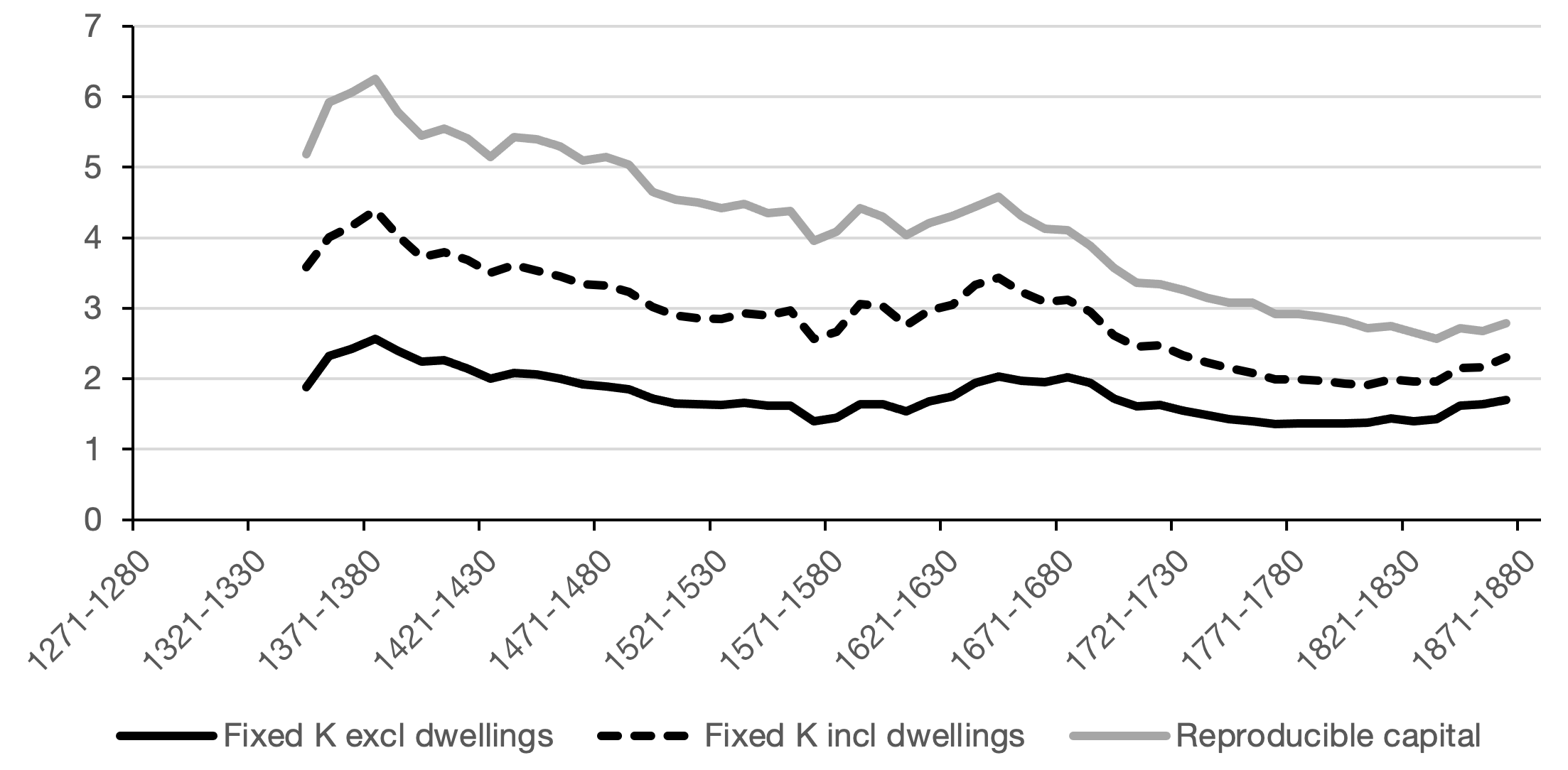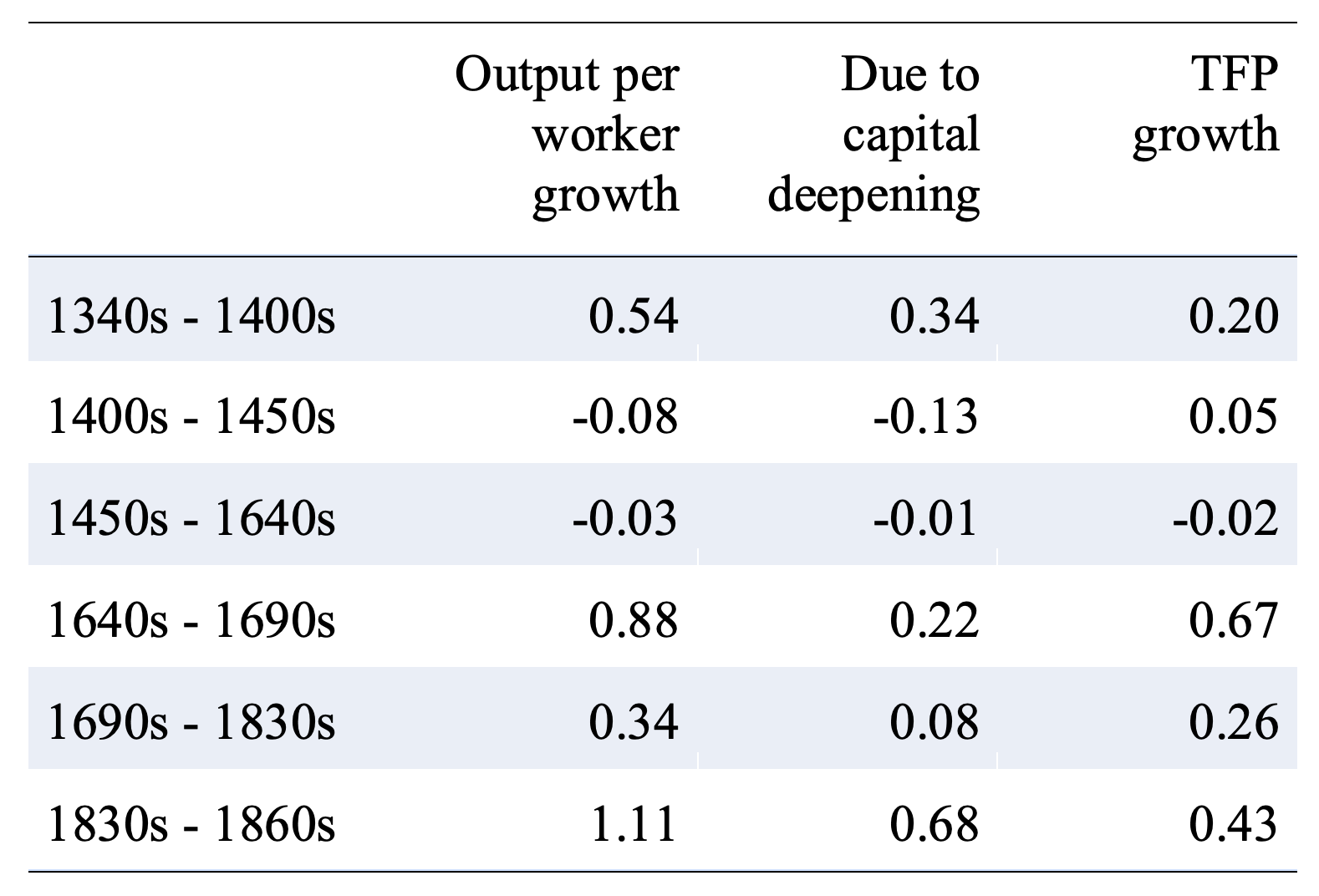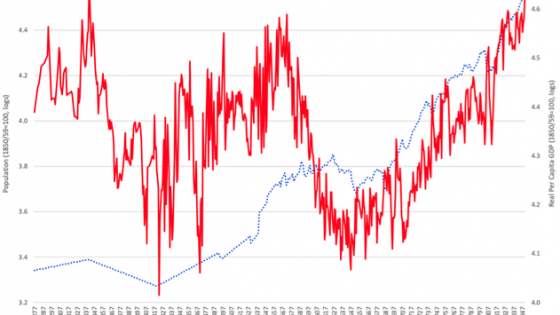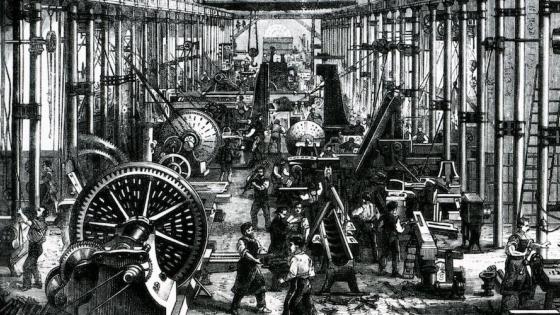The British Industrial Revolution of the 18th century is arguably the most important turning point in world history. The debate about the transition to ‘modern economic growth’ that occurred during this period has recently been linked to the study of patterns of per capita GDP over the very long run (see Bolt and van Zanden 2014 for an overview). Building on a rich new set of data, Broadberry et al. (2015) show that Britain developed into the most prosperous and dynamic part of Europe. However, the classic period of the Industrial Revolution was preceded by two earlier growth spurts during the second half of the fourteenth century and the second half of the 17th century.
Economists and economic historians have often speculated about the role of capital in economic growth during the rise of capitalism, but until now they have lacked the data needed to conduct a systematic analysis of the phenomenon. For Britain, data on physical capital accumulation have been available only from 1760 onwards (Feinstein 1978, 1988), making it impossible to provide long run growth accounts for the first economy to achieve modern economic growth.
In a new paper (Broadberry and de Pleijt, 2021) we provide estimates of capital formation and the stock of physical capital in Britain, reaching back to 1270. The gross stock of fixed reproducible capital is estimated using the perpetual inventory method to ensure stock-flow consistency. Building on the previous work by Feinstein (1978, 1988), we estimate fixed capital for the three main sectors of the economy – agriculture, industry and services – and combine them into aggregate fixed capital. Fixed capital is then combined with working capital (farm stocks and non-farm stocks), land and overseas assets to provide a series of national wealth.
This new dataset first of all allows us to chart the changing composition of national wealth. Our findings suggest that there was a sharp decline in the share of land and a corresponding rise in the share of domestic reproducible capital and overseas assets. These trends partly reflect the growing importance of industry and services relative to agriculture as well as the increased importance of reproducible capital in all sectors, including agriculture. The growth in the share of domestic reproducible capital was driven by the growing importance of fixed capital relative to working capital, while the growing importance of overseas assets was a relatively late phenomenon, beginning in the 1750s.
Second, we analyse trends in the capital-labour and capital-output ratios (see Figures 1 and 2). They move broadly in line with Kaldor’s (1963) ‘stylised facts’, with the capital-labour ratio trending upwards but the capital-to-output ratio remaining stationary. It should be noted, however, that these trends are dependent on the use of fixed capital. Using reproducible capital, the capital-labour ratio was stationary until the 19th century and the capital-to-output ratio trended downwards.
Figure 1 Capital per head of the population, 1270–1870 (£ at constant 1700 prices)
Figure 2 Capital-to-output ratio at constant 1700 prices, 1270–1870
Third, these new data on capital and investment are combined with estimates of per capita GDP and labour input to assess whether economic growth came from the use of more factor input or from the more effective use of existing inputs. Growth accounting developed out of the work of Solow (1957), as a way of distinguishing between shifts of and movements along the aggregate production function. Accounts are provided in both extensive and intensive form, accounting for the growth of output and output per head, respectively, using both fixed capital and reproducible capital. Table 1 presents the results of the growth accounting exercise in extensive form, using fixed capital excluding dwellings, but the findings are similar for reproducible capital. They suggest that output growth was driven largely by the growth of factor inputs. The one period which does not conform to this strong dominance of factor inputs was between the 1640s and 1690s, when TFP growth made a much larger contribution to output growth. The intensive form accounts, depicted in Table 2, show that the growth of output per head was driven more by the growth of efficiency (TFP growth) than by capital deepening.
Table 1 Accounting for the growth of British GDP, 1340s to 1860s (% per annum)
Notes: Results for fixed capital excluding dwellings. Output and capital stock data are in constant 1700 prices. Weights for labour and capital are 0.6 and 0.4, respectively.
Table 2 Accounting for the growth of British GDP per head, 1340s to 1860s (% per annum)
Notes: Results for fixed capital excluding dwellings. Output and capital stock data are in constant 1700 prices. Weights for labour and capital are 0.6 and 0.4 respectively.
McCloskey (1981: 108), believing in the faster rates of output growth suggested by Deane and Cole (1967), and hence in a much larger Solow residual or TFP growth, wrote “ingenuity rather than abstention governed the industrial revolution”. To some extent, that picture is confirmed here in the intensive form growth accounts, with capital deepening accounting for over three-quarters of GDP per head growth between the 1690s and the 1830s, although capital deepening then becomes more important between the 1830s and the 1860s. However, taken together with the growth accounts in extensive form, it may be more accurate to say that abstention or thrift (savings = investment) and industriousness (growth of labour supply) as well as ingenuity (growth of TFP) governed the Industrial Revolution. This would also be consistent with the findings for other countries (Juhasz et al. 2020, Prados de la Escosura et al. 2020)
Finally, we examine the changing role of investment in the economy. The investment share of GDP increased substantially during the transition from pre-industrial to modern economic growth, but in a much more gradual way than suggested by Rostow (1960), with the domestic investment rate barely reaching 10% by the 1860s, when the total investment rate including overseas investment was just 14%.
References
Bolt, J and J L van Zanden (2014), “The Maddison Project: Collaborative Research on Historical National Accounts”, Economic History Review 67: 627-651.
Broadberry, S and A M de Pleijt (2021), “Capital and Economic Growth in Britain, 1270-1870: Preliminary Findings”, CEPR Discussion Paper 15889.
Broadberry, S, B M S Campbell, A Klein, M Overton and B van Leeuwen (2015), British Economic Growth, 1270-1870, Cambridge: Cambridge University Press.
Deane, P and W A Cole (1967), British Economic Growth, 1688-1959: Trends and Structure, 2nd edition, Cambridge: Cambridge University Press.
Feinstein, C H (1978), “Capital Formation in Great Britain”, in P Mathias and M M Postan (eds), The Cambridge Economic History of Europe, Volume VII: The Industrial Economies: Capital. Labour, and Enterprise, Part I, Britain, France, Germany and Scandinavia, Cambridge: Cambridge University Press, 28-96.
Feinstein, C H (1988), “National Statistics, 1760-1920: Sources and Methods of Estimation for Domestic Reproducible Fixed Assets, Stocks and Works in Progress, Overseas Assets, and Land”, in C H Feinstein and S Pollard (eds), Studies in Capital Formation in the United Kingdom, 1750-1920, Oxford: Oxford University Press, 257-471.
Juhasz, R, M Squicciarini and N Voigtländer (2020), “Technology Adoption and Productivity Growth: Evidence from Industrialisation in France”, VoxEU.org, 13 August.
Kaldor, N (1963), “Capital Accumulation and Economic Growth”, in F A Lutz and D C Hague (eds), Proceedings of a Conference Held by the International Economics Association, London: Macmillan.
McCloskey, D (1981), “The Industrial Revolution 1780-1860: A Survey”, in R Floud and D McCloskey (eds), The Economic History of Britain Since 1700, Volume 1: 1700-1860, Cambridge: Cambridge University Press, 103-127.
Prados de la Escosura, L, C Álvarez-Nogal and C Santiago-Caballero (2020), “Growth Recurring in a Preindustrial Economy: Spain in a Half-Millennium Perspective”, VoxEU.org, 7 May.
Rostow, W W (1960), The Stages of Growth: A Non-Communist Manifesto, Cambridge: Cambridge University Press.
Solow, R M (1957), “Technical Change and the Aggregate Production Function”, Review of Economics and Statistics 39: 312-320.
